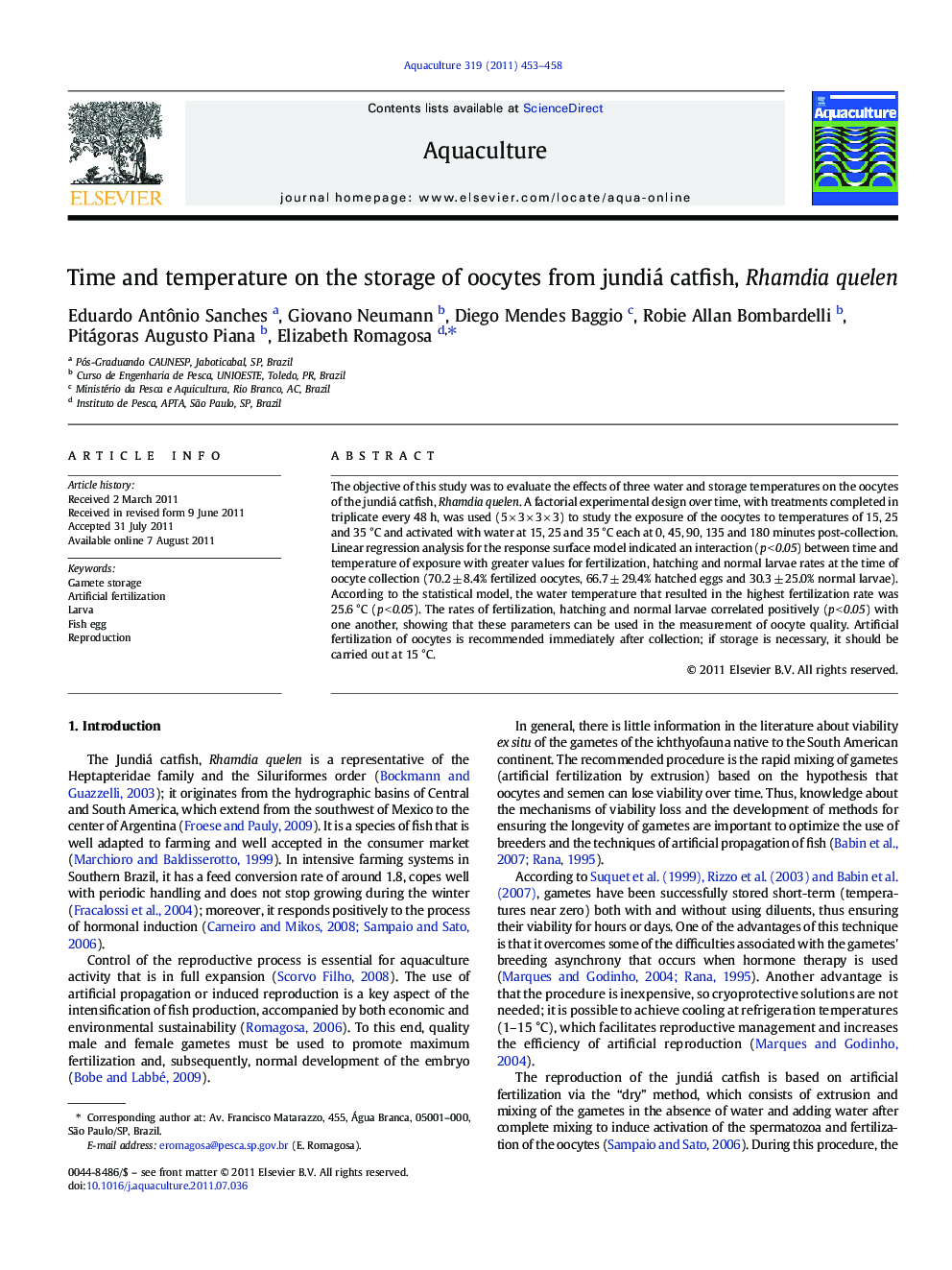| Article ID | Journal | Published Year | Pages | File Type |
|---|---|---|---|---|
| 2423008 | Aquaculture | 2011 | 6 Pages |
The objective of this study was to evaluate the effects of three water and storage temperatures on the oocytes of the jundiá catfish, Rhamdia quelen. A factorial experimental design over time, with treatments completed in triplicate every 48 h, was used (5 × 3 × 3 × 3) to study the exposure of the oocytes to temperatures of 15, 25 and 35 °C and activated with water at 15, 25 and 35 °C each at 0, 45, 90, 135 and 180 minutes post-collection. Linear regression analysis for the response surface model indicated an interaction (p < 0.05) between time and temperature of exposure with greater values for fertilization, hatching and normal larvae rates at the time of oocyte collection (70.2 ± 8.4% fertilized oocytes, 66.7 ± 29.4% hatched eggs and 30.3 ± 25.0% normal larvae). According to the statistical model, the water temperature that resulted in the highest fertilization rate was 25.6 °C (p < 0.05). The rates of fertilization, hatching and normal larvae correlated positively (p < 0.05) with one another, showing that these parameters can be used in the measurement of oocyte quality. Artificial fertilization of oocytes is recommended immediately after collection; if storage is necessary, it should be carried out at 15 °C.
